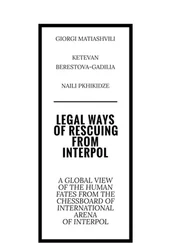The appeal of vengeance was even stronger among the barbarians than it had been for the Athenians. Few activities were quite as satisfying to German and Scandinavian warriors as the thrill of hunting down and annihilating a kinsman’s killer and they did not even theoretically leave the job to the gods. Whereas the Furies of Greece had stood ready to wreak vengeance if a kinsman failed to do so, the closest barbarian equivalent were the German Valkyries, and they were responsible only for hovering over battlefields and transporting fallen warriors to Valhalla. The shame of cowardice and the spur of a fame to outlast death were enough to make the barbarians settle scores themselves.
The eagerness for revenge finds expression in all the great literature of the era. The epic poem of Beowulf , written in the tenth century and composed up to three hundred years earlier, was concerned throughout with justice, and it was owed as much to the dead as to the living. On occasion, the dead even had the prior claim. When King Hrethel’s eldest son was accidentally killed by a younger one, the monarch was plunged into despair – not only because his firstborn had died, but also because kinship rules forbade him from killing the survivor.
No less vivid is the Norse myth of Balder the Beautiful. Balder, the god of light, was so beloved that when he dreamed of death, his mother Freya was able to persuade almost every single object on earth not to hurt him. She failed to ask only the mistletoe, a plant so young and feeble that it seemed entirely harmless. The omission would, needless to say, have consequences. As news spread around Asgard that Balder was invulnerable, his fellow gods began playfully to pelt him with battleaxes, clubs, and spears. Only two stood on the sidelines: Loki, god of mischief, and Hodur, the blind, dim twin of brilliant Balder. Loki, unremitting prankster that he was, had made it his business to learn mistletoe’s secret, and he asked Hodur why he was not joining in the fun. Hodur explained sadly that he had no missiles, and wouldn’t know where to throw them even if he did. Loki offered to assist. He happened in fact to have a bow and a mistletoe dart. And thus it was that while Balder was joyfully bouncing off hardware from every other direction, Loki guided Hodur’s aim and a whirring arrow skewered like a stiletto through Balder’s beautiful forehead. The god teetered and toppled, and had barely hit the ground before a fellow deity called Wali had sworn neither to comb his hair nor wash his hands until he had sent the guilty party to the underworld. But it was not Loki whom he had in mind. His first concern was with the killer himself – and it was hapless Hodur who was hunted down and despatched to the shadowlands of Hel.
Christianity made steady headway through the new peoples, but the potency of such traditions was such that it was converted almost as much as the pagans were. The idea that the morality of a deed depended on the doer’s state of mind, though seen throughout the Bible and common among the Athenians and Romans, steadily gave way to a sense that acts were good or evil, regardless of intention. Christianized rulers often enacted laws based on the Bible but, keenly aware of the fragility of their authority, generally did very little to enforce them.
Laws were not, however, abandoned. Although rulers could not make their subjects be good, they began to establish some control over their feuds and squabbles by fixing guidelines for compensation, and asserting that complainants could resort to violence only as a last resort. The tariffs varied depending on the seriousness of the offence. The laws of the Salian Franks, written down towards the end of the fifth century AD, required three shillings from those who defamed someone by calling them a fox or a hare. Abducting a virgin in Kent a century later entitled her owner to fifty shillings. Among the Frisians of the late eighth century, the value of a life ranged from cost price, for a slave, to eighty shillings for a nobleman.
Such codes hardly made for the rule of law, but each reflected the development that Aeschylus had once idealized in the Oresteia : the attempt to formulate collective justice as an honourable substitute for private revenge. The same process seems to occur whenever a community becomes sufficiently self-aware to recognize that it has disputes to resolve. Cultures around the world have used countless different methods to contain the violence. Among the Inuit of Greenland, disputants once abused each other in song and proved the superiority of their claims through feats of great athleticism. The Tiv of Nigeria chanted insults at their opponents, and tied them to trees. Massa clans in Cameroon–Chad used to thrash out their differences by fighting huge battles with very small twigs. And the proto-litigants of medieval Europe relied on a very particular technique of their own – the oath.
The oath has probably been guaranteeing truth for as long as humanity has been able to envisage a power more vengeful than itself, and the promise to the divinity concerned has always been a terrible one. Accuser and accused in an Athenian murder trial would swear on their children’s heads while standing atop the entrails of a boar, a ram, and a bull. One method of renewing the Covenant among the ancient Hebrews involved walking between the two halves of a bisected calf. Medieval Christendom used tokens of mortality no less fearsome, typically the body parts of saints, and oaths formed the basis for its earliest trials – ceremonies known as compurgation, at which defendants proved their innocence by gathering together people willing to swear to their cause.
The ritual was enshrined in writing in the very first barbarian law codes, and by the seventh and eighth centuries it was being practised across Europe. Under open skies, each member of the team – known collectively as compurgators, conjurors, or jurors – would swear upon a shard of holy shinbone, say, that the defendant had not committed the alleged crime. The number of witnesses required depended on factors that ranged from the status of the suspect to the nature of the offence. Queen Uta of Germany, accused of adultery in 899, was acquitted only after eighty-two knights stepped forward to confirm her chastity. It would have taken six hundred people to acquit an accused poisoner in Dark Age Wales. On the other hand, those lucky enough to be deaf, dumb, aristocratic or pregnant were often accorded special privileges, and anyone accused of crime in seventh- and eighth-century Spain was downright lucky. Suspects who swore to the baselessness of charges laid against them were not only absolved of guilt, but also awarded compensation at the expense of their accusers.
Such proceedings, though reliant on witnesses, were not inquiries. The oath, far from ensuring the reliability of evidence, was the evidence; and jurors swore to their support of a defendant rather than to what they knew of a case. One consequence was that they were liable in some places to punishment for perjury if they got it wrong. Another was that any formal defect in the ceremony allowed people to lie with impunity. Swearing falsely on a saint’s relics was ordinarily a one-way ticket to hell, but if the reliquary was empty – because, for example, the testifier had secretly removed its contents – a person could swear that black was white with no ill effects at all. Similarly, it was a grievous sin to speak falsely to a priest while holding a consecrated cross, but fine to clutch the crucifix and lie blind if the only people present were non-clerical. In medieval Europe, breaking a promise was of little consequence. The fault lay in doing so after God had been asked to watch.
At the end of the first millennium AD, attitudes towards criminal justice in Europe therefore stood at a cusp. Religious and secular authorities were trying to encourage individuals to give courts a chance before taking matters into their own hands, but the belief in vengeance remained alive and well. The passions of the feud were being accommodated rather than ignored, and they were always liable to spill over beyond the institutions designed to contain them. No tale better captures the frailty – and peculiarity – of the attempts to tame gang warfare with the oath than the Icelandic Saga of Burnt Njal.
Читать дальше




![Theresa Cheung - The Dream Dictionary from A to Z [Revised edition] - The Ultimate A–Z to Interpret the Secrets of Your Dreams](/books/692092/theresa-cheung-the-dream-dictionary-from-a-to-z-r-thumb.webp)







